You’ve just decorated your living room with a gorgeous spider plant. Its long, curly green leaves spill beautifully from the pot, giving your home that perfect fresh vibe.
But wait… where’s your dog?
Oh no — he’s right there, happily chewing on those very same leaves like it’s his personal salad bar! In that moment, you might panic and wonder, are spider plants toxic to dogs? Don’t worry — we’ll clear up the truth in this guide.
At that moment, your heart skips a beat and one thought races through your mind, are spider plants toxic to dogs. Did I just put my furry baby in danger?
Don’t worry — you’re not alone. Almost every pet parent who loves plants has faced this exact fear. And in this guide, we’ll break down the truth about spider plants, whether they’re safe for your pup, and what to do if your dog sneaks a bite.
What is a Spider Plant?
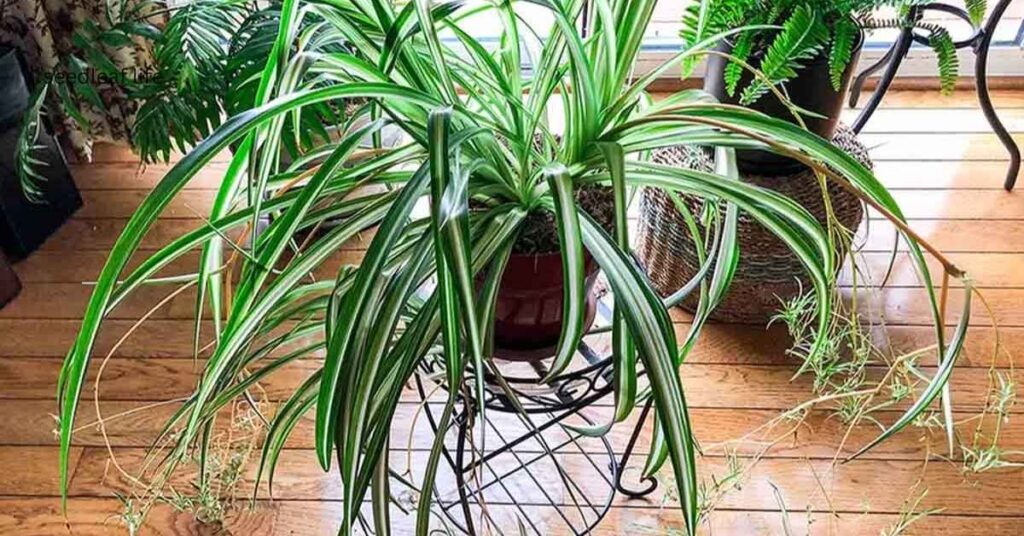
A spider plant (Chlorophytum comosum) is one of the most popular indoor houseplants, admired for its long, arching green-and-white striped leaves. Known for being low-maintenance and air-purifying, spider plants add freshness and beauty to homes, offices, and even small apartments.
Their attractive appearance and ability to grow in almost any condition make them a favorite choice among plant lovers. Another reason people love spider plants is that they produce small baby “spiderettes,” which can easily be replanted, making them fun to grow and share.
However, spider plants don’t just catch human attention — dogs often find their grassy leaves tempting to chew on. This natural attraction can sometimes make pet parents wonder, are spider plants toxic to dogs, and if these popular houseplants are truly safe for their furry companions.
The Beauty of Spider Plants: Are They Toxic to Dogs?
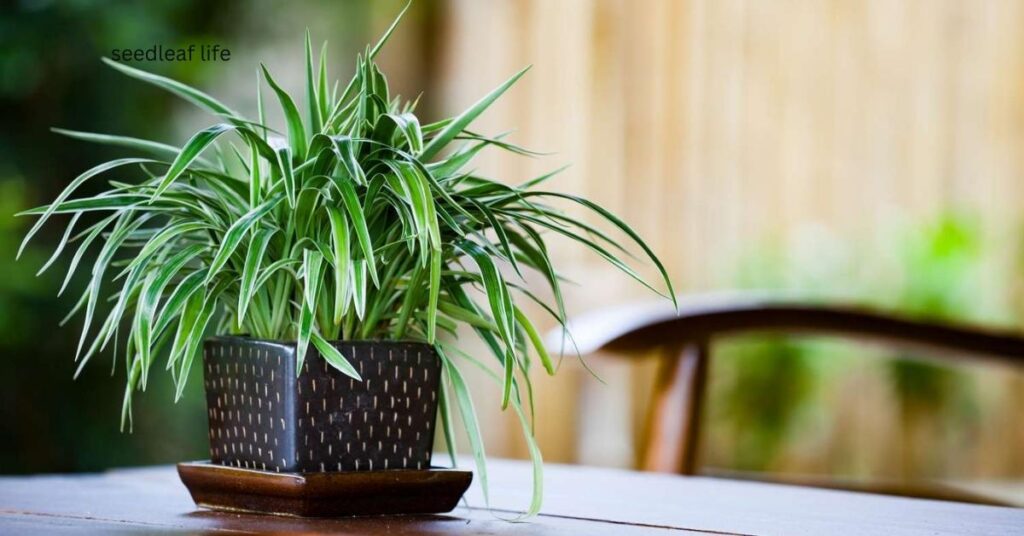
Spider plants aren’t just houseplants — they’re little green jewels that brighten up any space. With their flowing leaves and playful baby shoots, they bring a fresh, lively energy to your home without demanding much care. And if you’ve ever wondered are spider plants toxic to dogs? The good news is they’re completely safe and pet-friendly.
Why They’re So Attractive
- Long, arching green-and-white leaves
Spider plants grow in a fountain-like shape with green and white stripes. Their flowing look makes them one of the most eye-catching indoor plants. - Naturally elegant and low-maintenance
They don’t need fancy care or constant attention. Even beginners can keep them thriving and beautiful with little effort. - Produce baby “spiderettes” that look cute
These tiny offshoots dangle from the mother plant like ornaments. They not only look adorable but can also be replanted to grow more spider plants.
How They Enhance Home Decor
- Perfect for hanging baskets
Spider plants look stunning when placed in hanging baskets. Their arching leaves and dangling baby shoots spill beautifully, adding a natural flow to your walls or ceilings. - Add a fresh, tropical vibe indoors
With their lush green-and-white leaves, spider plants bring a touch of the tropics right into your living room. They make your space feel more alive and refreshing. - Instantly brighten up dull corners
Got an empty corner or a boring shelf? A spider plant can transform it instantly. Their vibrant look adds warmth and brightness to any spot in the house.
Spider Plants and Stress Relief: How They Calm Your Mind

Spider plants aren’t just houseplants — they’re little green jewels that brighten up any space. With their flowing leaves and playful baby shoots, they bring a fresh, lively energy to your home without demanding much care. Many pet owners wonder, are spider plants toxic to dogs. The good news is they’re completely safe, making them a perfect choice for homes with pets
The Relaxing Effect
- Greenery helps reduce stress and anxiety
Studies show that just looking at indoor plants can lower stress levels. Spider plants, with their soothing leaves, make your home feel more calming. - Improves focus and mental well-being
Having plants around keeps your mind fresh and clear. They create a positive environment that helps you stay focused on daily tasks. - Creates a peaceful indoor atmosphere
The gentle flow of their leaves adds a natural calmness to your space, almost like bringing a little piece of nature indoors.
Health Benefits Beyond Looks
- Boosts mood naturally
A spider plant can lift your spirits on a dull day. Their vibrant green presence has a way of making any room feel more cheerful. - A great choice for work-from-home setups
Keeping a spider plant near your desk helps reduce eye strain and makes your workspace more lively and stress-free.
Light, Air, and Water: What Spider Plants Truly Need
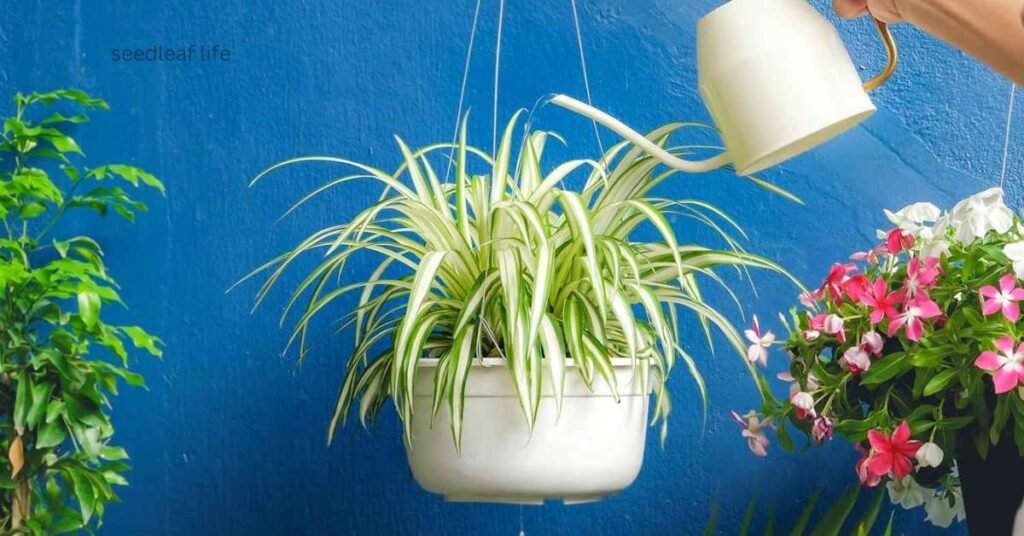
If you’re wondering are Spider Plants Toxic to Dogs? the good news is they’re safe for pets while being easy to care for. These resilient plants love bright, indirect sunlight, need evenly moist soil, and can even tolerate low-light spots. On top of that, they naturally purify the air, making your home fresher and more inviting.
Light Requirements
- Thrive in bright, indirect sunlight
Spider plants grow best in bright but indirect light. Too much direct sun can scorch their leaves, while moderate light keeps them lush and vibrant. - Can tolerate low light conditions
These plants are surprisingly adaptable. Even in less sunny spots, they can survive, making them perfect for different indoor spaces.
Watering Needs
- Like evenly moist soil
Keep the soil slightly damp but not soggy. Regular watering helps the leaves stay healthy and green - Don’t overwater—roots may rot
Overwatering is the most common mistake. Make sure the pot drains well to prevent root damage.
Air-Purifying Qualities
- Known to remove toxins from indoor air
Spider plants naturally clean the air by absorbing pollutants, helping your home feel fresher. - Improve air circulation in rooms
Their presence promotes better airflow, adding to a healthier and more pleasant indoor environment. - Spider plants naturally clean the air by absorbing pollutants, helping your home feel fresher. For tips on growing more houseplants, check out our complete guide to propagating snake plants
Pet-Friendly Plants: Are Spider Plants Toxic to Dogs?
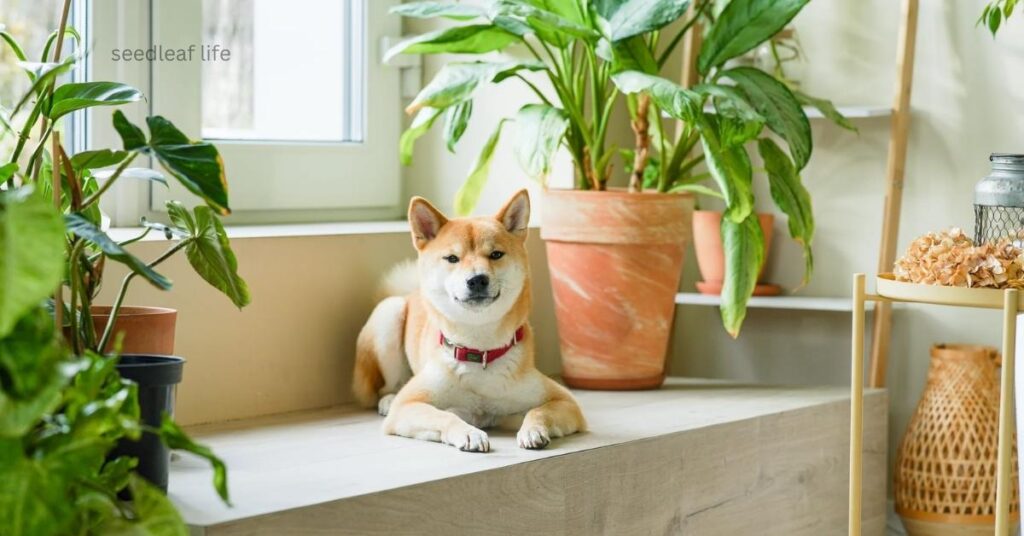
Spider plants are among the safest houseplants for homes with pets. Many pet owners often ask, are spider plants toxic to dogs? The answer is no — they’re non-toxic, making them a perfect pet-friendly choice that adds greenery without risk
- Non-toxic to dogs and cats (ASPCA approved)
Spider plants are completely safe for your furry friends. You don’t have to worry about your dog or cat getting sick if they nibble a leaf. - Safe choice for households with curious pets
Their gentle nature makes them ideal for homes with pets who love exploring. You can enjoy greenery without constant stress. - A better option compared to lilies or pothos
Unlike many common houseplants like lilies or pothos, spider plants won’t harm pets. So if you’re wondering, are spider plants toxic to dogs, the answer is no, making them a smart and worry-free choice for pet-friendly decor.
Happy Pets, Happy Plants: Are Spider Plants Toxic to Dogs?
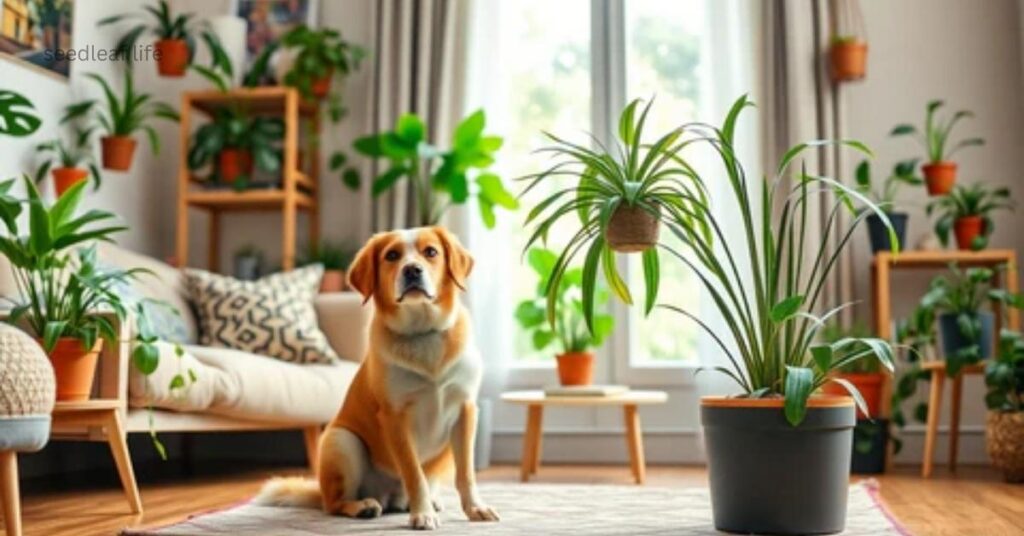
Wondering are spider plants toxic to dogs? The good news is they’re safe for your furry friends! By placing them in the right spots and using simple strategies, you can enjoy beautiful greenery without worrying about your pets. With gentle training, chew toys, and smart plant placement, both your spider plants and pets can thrive happily together.
Place Spider Plants in Safe Spots
- High shelves or counters
Keep spider plants on elevated surfaces to prevent curious pets from reaching them. - Out-of-the-way corners
Place plants where pets rarely wander to avoid accidental nibbling. - Near windows but away from traffic
Let the plants get sunlight while keeping them safe from pets running around.
Use Hanging Planters
- Ceiling or wall-mounted baskets
Hanging baskets keep plants out of reach while adding a stylish touch. - Trailing leaves display beautifully
Spider plants’ “spiderettes” hang down elegantly, creating a living décor element. - Even if pets jump or play around, the plants remain protected. And since many owners worry, are spider plants toxic to dogs?, it’s reassuring to know they’re completely safe while still adding beauty to your home.
Distract Pets with Chew Toys: Are Spider Plants Toxic to Dogs?
- Provide fun alternatives
Chew toys or treats redirect pets’ attention away from plants. - Rotate toys regularly
Keep pets engaged by changing their toys, reducing interest in plants. - Interactive playtime
Spend a few minutes a day playing with your pet to curb plant-biting tendencies.
Gentle Training to Avoid Plant-Biting
- Positive reinforcement works best
Reward pets when they ignore the plants to encourage good behavior. - Avoid scolding
Negative reactions may stress pets and make them curious instead. - Consistent routine
Gently teach pets over time which areas are off-limits, building harmony at home.
Are Spider Plants Toxic to Dogs if Chewed?
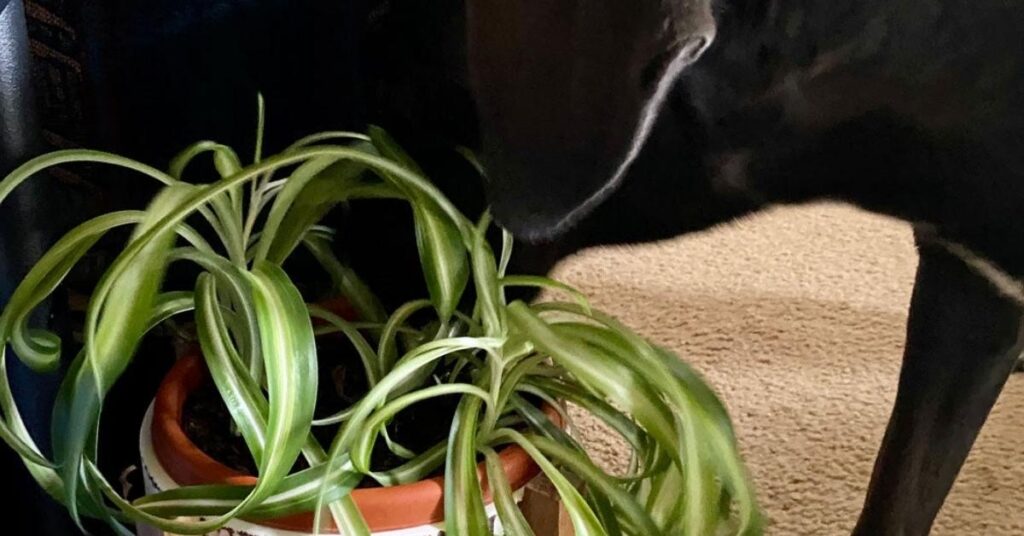
Wondering are Spider Plants Toxic to Dogs, Don’t worry — they’re safe! Pets may nibble a few leaves and experience mild tummy upset or drooling, but serious issues are very rare. Spider plants are non-toxic, making them a perfect choice for homes where dogs and cats love exploring greenery.
Mild Digestive Upset: Are Spider Plants Toxic to Dogs?
- Occasional vomiting or soft stool
Eating a few leaves might upset your pet’s stomach temporarily, but symptoms usually pass quickly. - Drooling or mild discomfort
Some dogs or cats may drool or paw at their mouths after nibbling, which is normal and harmless.
Safe for Pets
- No life-threatening toxins
Spider plants are non-toxic, so even if your pet chews a little, it won’t cause serious harm. - Mostly harmless fun
While your furry friend might enjoy tasting a leaf, it’s not dangerous, making spider plants a safe, pet-friendly choice.
Conclusion
So, are spider plants toxic to dogs? The reassuring answer is — they’re considered safe, non-toxic houseplants for your furry friends. While a curious pup might experience mild stomach upset after nibbling the leaves, these plants pose no serious risk.
That makes spider plants a wonderful choice for pet-friendly homes, offering beauty, cleaner air, and peace of mind. By combining smart placement with gentle training, you can enjoy the lush greenery of your spider plant while keeping your dog happy and healthy.
FAQs
1. Can spider plants be grown outdoors?
Yes, spider plants can thrive outdoors in bright, indirect light. Avoid harsh direct sunlight, and protect them from frost in colder weather.
2. Are spider plants toxic to dogs?
No, spider plants are safe for dogs. Occasional nibbling might cause mild stomach upset, but they contain no harmful toxins.
3. Why should you keep a spider plant at home?
Spider plants are low-maintenance, add natural greenery, improve air quality, and are safe for pets — making them ideal for any home.
4. What are the benefits of spider plants?
They clean indoor air, reduce stress, brighten spaces, and create a calm, refreshing environment for both humans and pets.
5. Where is the best place to put a spider plant?
Place them in bright, indirect sunlight, such as near a filtered window, on shelves, or in hanging baskets for trailing leaves.
6. How do you take care of a spider plant indoors?
Keep soil slightly moist, avoid overwatering, provide indirect sunlight, trim brown tips, and repot when the plant outgrows its pot.
7. Do spider plants like sun or shade?
They prefer bright, indirect sunlight. Too much direct sun can scorch leaves, while too much shade may slow growth.

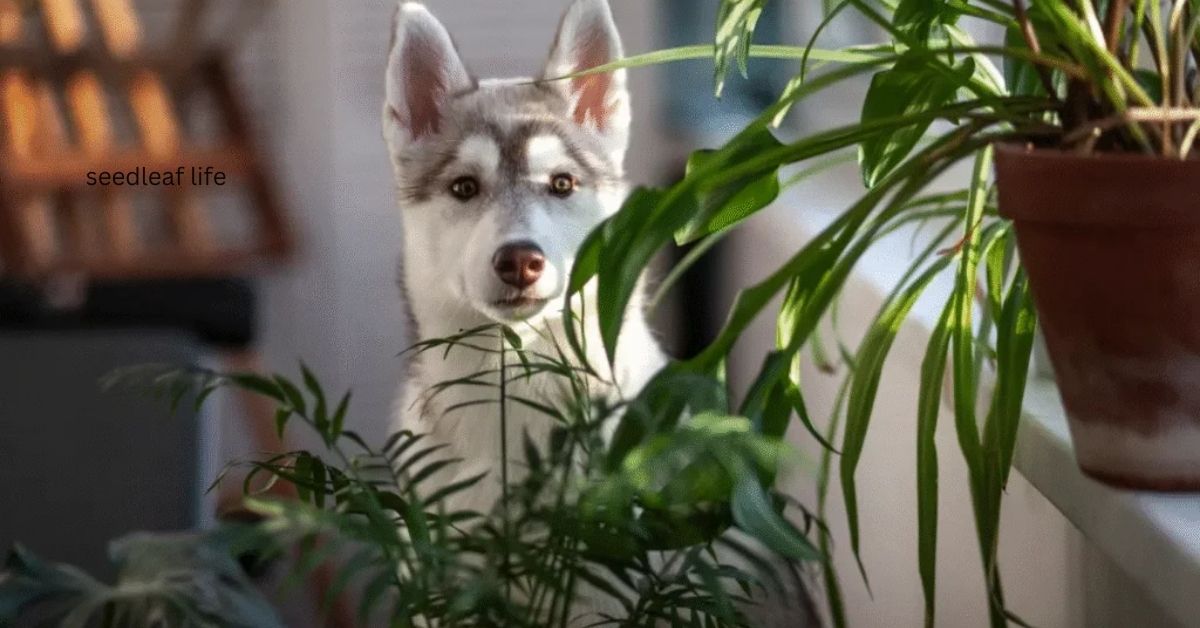
2 responses to “Are Spider Plants Toxic to Dogs? 5 Safety Tips for Pet Parents 2025”
[…] From snake plants, we can gain several valuable benefits, such as purifying the air and reducing stress. They are easy to keep both at home and in the office. If you also have pets at home, you may want to learn about whether spider plants are toxic to dogs. […]
[…] planted it in a pot, keeping it near the window in my room. The funny thing is that I already had a spider plant in my room. Now I have found another friend—a plant—in my room, whom I can look at and feel […]